- Author: Cathy
Laser cutting wood is an efficient, precise, and highly creative process. Whether for handcrafted designs, furniture making, or personalized decorations, CO₂ laser cutters enable intricate patterns and smooth edges with ease. This guide explores how to select the right wood, optimize cutting results, and enhance your laser cutting experience.
1. Can I Laser Cut with Wood?
The answer is definitely yes, laser machines are absolute masters at cutting wood!
You may have manually cut wood using wood cutting tools like saws, planers, mills, drills, and chisels, but none of them are as efficient and precise as laser cut.
Laser cutting for wood offers significant advantages, such as precision, efficiency, and versatility. It allows for highly accurate cuts and intricate designs while minimizing material waste. The clean cutting process, with less dust and debris, along with the lack of tool wear, adds to its appeal for both hobbyists and professionals working with wood.
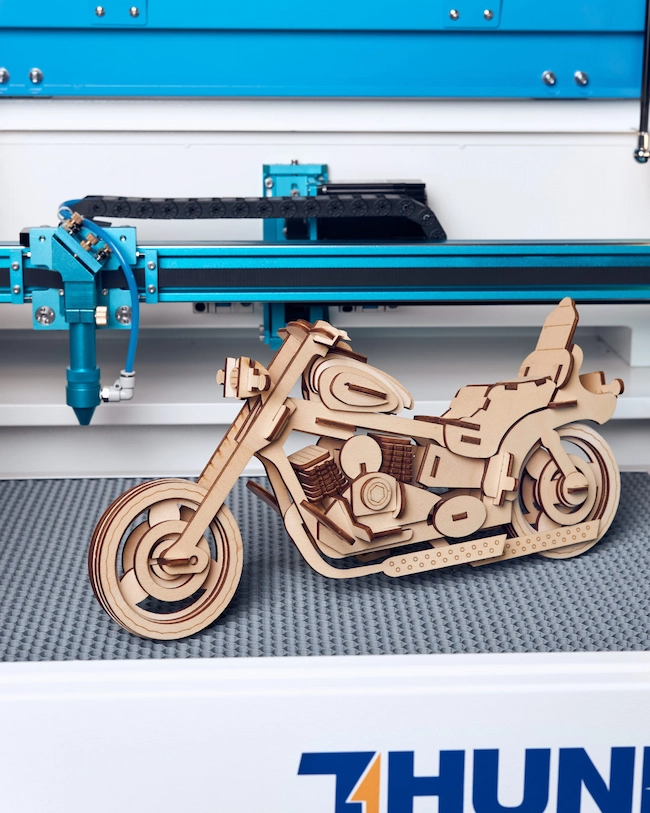
How Thick of Wood Can a Laser Cutter Cut?
2.Best Wood for Laser Cutting
Do you want to know what type of wood is used for laser cutting? These are all common woods used for laser cutting! You can choose among them based on their different characteristics to custom laser cutting wood.
2.1. Basswood
2.2. Cherry wood
2.3. MDF
2.4 Birch Plywood
Learn More: Best wood for laser engraving and cutting!
3. How to Choose Wood for Laser Cutting?
The type of wood, its density, and moisture content all play crucial roles in the quality of the cut. Generally, thickness is another important consideration, as it affects cutting time and power requirements. The thinner and flatter the material, the easier it is to cut.
Additionally, you should select wood types with different appearances and characteristics based on the desired outcome of your product. For example, hardwoods like maple or cherry often provide crisp, clean edges, while softer woods like pine may be easier to cut but might produce more charring.
The best choice depends on your specific project requirements, the capabilities of your laser cutter, and the desired outcome of your work.
4. What Wooden Products Can You Create?
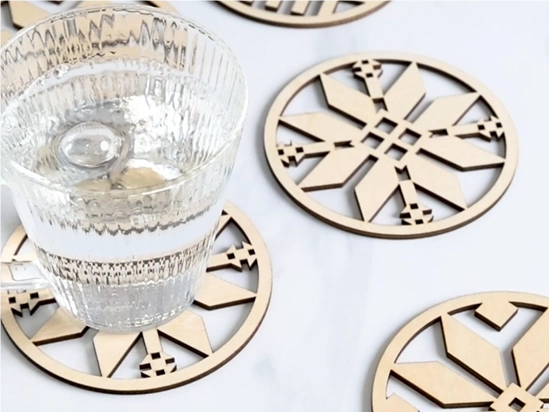
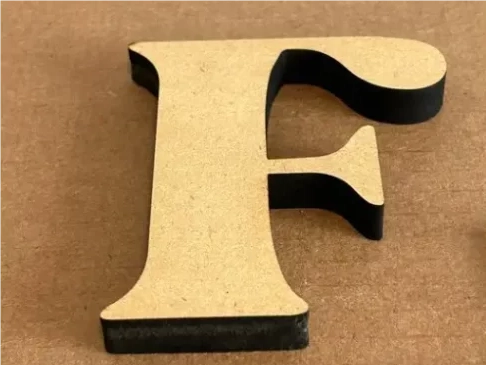
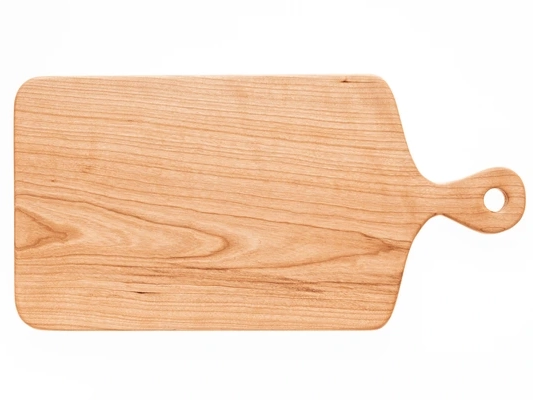

5. How to Laser Cutting Wood?
It’s easy to use a laser cutting wood machine and the software to cut wood, requiring only simple machine and software operations. You need to set the parameters according to the reference values for your material and run tests, after which the laser will process according to your set pattern and parameters.
Step #1: Prepare your design: Create or import your design into laser cutting software.
Step #2: Choose the right wood: Select wood suitable for laser cutting, considering factors like thickness and type.
Step #3: Set up the laser cutter: Place the wood in the machine and ensure it’s properly aligned.
Step #4: Adjust laser settings: Set the appropriate power, speed, and frequency for your specific wood and design.
Step #5: Focus the laser: Ensure the laser is correctly focused on the wood surface.
Step #6: Perform a test cut: Do a small test to check settings and adjust if necessary.
Step #7: Start the cutting process: Run the full design, monitoring the process. Monitor the engraving process to ensure the exhaust system is effectively removing smoke. You can also activate the dual air assist to clear debris from the wood surface.
Step #8: Post-processing: Once complete, remove the wood cut pieces and clean up any residue. Wait for the wood to cool before handling it to avoid burns. Check the edges for any charring and sand them smooth if necessary.
Can You Laser Cut Wood without Burning it?
6. Tips and Tricks for Laser Cutting Wood
Achieving clean and precise laser cuts on wood requires proper technique and troubleshooting. If you encounter issues like incomplete cuts, excessive burn marks, or the need for better support, these practical tips will help you optimize your laser cutting results.
6.1. What to Do If the Wood Board Cannot be Laser Cut Through?
1. Adjust the Settings
If your laser engraver has adjustable power settings, increasing the power output can significantly improve the cutting process.
Additionally, reducing the cutting speed allows the laser more time to penetrate the material. Moving the laser too quickly over the wood can prevent it from fully cutting through, so adjusting both the power and speed can make a noticeable difference in the quality of your laser cutting results.
2. Use Multiple Passes
For thicker materials or denser wood types, a single pass may not suffice to achieve a clean cut. In such cases, performing multiple passes with the laser can help the beam penetrate deeper and cut through the material more effectively.
It’s important to adjust the laser settings between passes to avoid damaging the wood, ensuring a smoother and more accurate cut each time.
3. Select the Right Wood Type
It’s essential to consider the wood type when using a laser cutter. Different types of wood have varying densities and resin content, which can impact how easily they can be cut. Some woods, particularly harder or denser varieties, may be more challenging to cut with a laser.
Therefore, verify that the wood you’re working with is suitable for laser cutting and doesn’t require special treatment to achieve optimal results. Testing different wood types can also help you find the best material for your projects.
4. Choose a longer Focal Lens
If you’re encountering difficulties cutting through thicker materials, consider switching to a lens with a longer focal length. This adjustment allows for more precise laser cutting, as it focuses the laser beam more effectively on the material, resulting in better depth penetration.
Using the right lens can improve cutting performance, especially when working with materials like hardwood or plywood that require more intense energy for a clean cut.
6.2. Best Working Table for Laser Cutting Wood
When laser cutting wood, selecting the right working table is essential for achieving optimal results. The surface beneath the wood plays a key role in supporting the material, enhancing airflow, and improving the overall cutting quality. Here are several options that can provide the necessary support and improve the cutting process
Honeycomb cutting bed: A specialized surface that provides excellent support and airflow.
Sacrificial material: Thin sheets of MDF, plywood, or acrylic that can be discarded after use.
Aluminum slats: These provide good support and heat dissipation.
Pins or raised supports: These elevate the wood, allowing smoke and debris to fall away from the cut area.
6.3. How to Remove Burn Marks from Laser Cutting Wood?
Sanding on the edges: To remove this, start by sanding the affected areas with fine-grit sandpaper, working your way to finer grits for a smooth finish.
Using cleaning agents: For stubborn marks, try using a mixture of baking soda and water to create a paste, then gently scrub the area. Alternatively, wood bleach can be effective for lightening darker scorch marks.
For a natural approach, lemon juice or vinegar can help lighten burn marks. After treatment, always clean the wood thoroughly and apply a finish if desired.
7. Best Laser Cutter for Wood - CO2 Laser Cutter
When selecting a laser cutter for wood, it’s crucial to consider the type of laser used. CO₂ lasers stand out as the best choice for precise and efficient wood cutting. Let’s explore why CO₂ lasers excel in this application and which machine is the right fit for your needs.
7.1. Why CO2 Laser Cutter is the Best Choice for Cutting Wood?
Although there’re different types of laser to cut wood, CO2 lasers perform is the best laser for cutting wood.
Fiber lasers have too strong laser energy, posing a fire risk when cutting wood. While diode lasers are inexpensive and suitable for light processing, they are not suitable for cutting thicker wood. The laser beam emitted by CO2 lasers is easily absorbed by wood, making it highly efficient for cutting wood, with low energy that is less likely to cause fires.
7.2. Choose Thunder Laser Woodworker!
This is a highly efficient, high-quality CO2 laser machine, offering speeds up to 1000mm/s. Having a expansive working area and feature pass-through doors, Nova is able to accommodate oversized materials.
You can easily cut thicker wood, and larger pieces of wood are not a problem too. It’s a good choice for people who set up laser wood workshop and need high quality results and batch production.
8. Recommended Laser Cutting Wood Parameters
| Materials | Thickness(mm) | Processing | Speed(mm/s) | Min Power(%) | Max Power(%) | Air Pressure Value | DPI |
|---|---|---|---|---|---|---|---|
| Birch Ply | / | Engraving | 500 | 10% | 90% | low | 300 |
| 3mm | Cutting | 55 | 10% | 90% | high | ||
| 6mm | 25 | 10% | 90% | high | |||
| 10mm | 18 | 10% | 90% | high | |||
| Cherry Wood | / | Engraving | 500 | 10% | 20% | low | 300 |
| 3mm | Cutting | 85 | 10% | 90% | high | ||
| 8mm | 24 | 10% | 90% | high | |||
| 11mm | 16 | 10% | 90% | high |
Conclusion
Laser cutting wood is a versatile and reliable method for achieving clean, precise results across various applications. By selecting the right CO₂ laser cutter and fine-tuning your settings, you can enhance cutting efficiency and material utilization. Whether for business production or creative projects, mastering laser cutting techniques ensures high-quality outcomes while maximizing productivity.
FAQs About Laser Cutting Wood
Q1. How can I prevent warping when laser cutting wood?
Store wood in a dry, temperature-controlled environment, and secure it flat during cutting using weights or a vacuum bed to minimize warping.
Q2. Why do some laser cutting wood edges turn brown or black??
This is due to charring caused by excessive heat. Using air assist, optimizing power and speed settings, and applying masking tape can reduce burn marks.
Q3. Can I use painted or stained wood for laser cutting?
Yes, but ensure the paint or stain is non-toxic and safe for laser processing. Some coatings can produce hazardous fumes.
Q4. How should I store wood properly for laser cutting?
Keep wood in a dry, low-humidity (below 50%) environment, store it flat or vertically with support to prevent warping, and avoid direct sunlight or temperature fluctuations. Use weights if needed for stability.
Q5. How do I clean the wood after laser cutting?
To clean wood after laser cutting, gently wipe the surface with a soft cloth or brush to remove any dust or debris. For stubborn residue, use a mild soap solution and a soft cloth. To address burn marks, lightly sand the edges or use a specialized burn mark remover. Finally, ensure the wood is completely dry before further processing.
When laser cutting wood, it’s crucial to place something underneath for various improvements, including protecting the laser cutter’s bed, improving cutting quality, enhancing airflow, and reducing reflections.
- Tags
#laser cutting wood, #laser cut wood, #wood for laser cutting, #wood cutting tools, #laser wood cutting machine, #co2 laser engraver

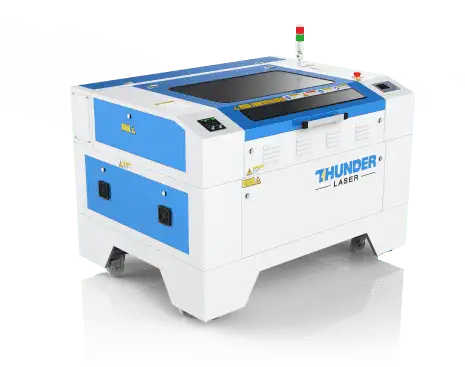

.png) International
International
 United States
United States
 Brasil
Brasil
 Canada
Canada
 Costa Rica
Costa Rica
 Česká
Česká
 Ελλάδα
Ελλάδα
 Polska
Polska
 Ireland
Ireland
 Portugal
Portugal
 Lietuva
Lietuva
 Россия
Россия Deutschland
Deutschland
 Britain
Britain
 Україна
Україна
 France
France
 Sverige
Sverige
 Italia
Italia
 Norway
Norway
 Denmark
Denmark
 Romania
Romania
 한국
한국
 中国
中国
 ประเทศไทย
ประเทศไทย
 中国香港
中国香港
 Israel
Israel
 中國臺灣
中國臺灣
 India
India
 پاکستان
پاکستان
 پශ්රී ලංකා
پශ්රී ලංකා
 ジャパン
ジャパン
 Australia
Australia
 New Zealand
New Zealand
 South Africa
South Africa